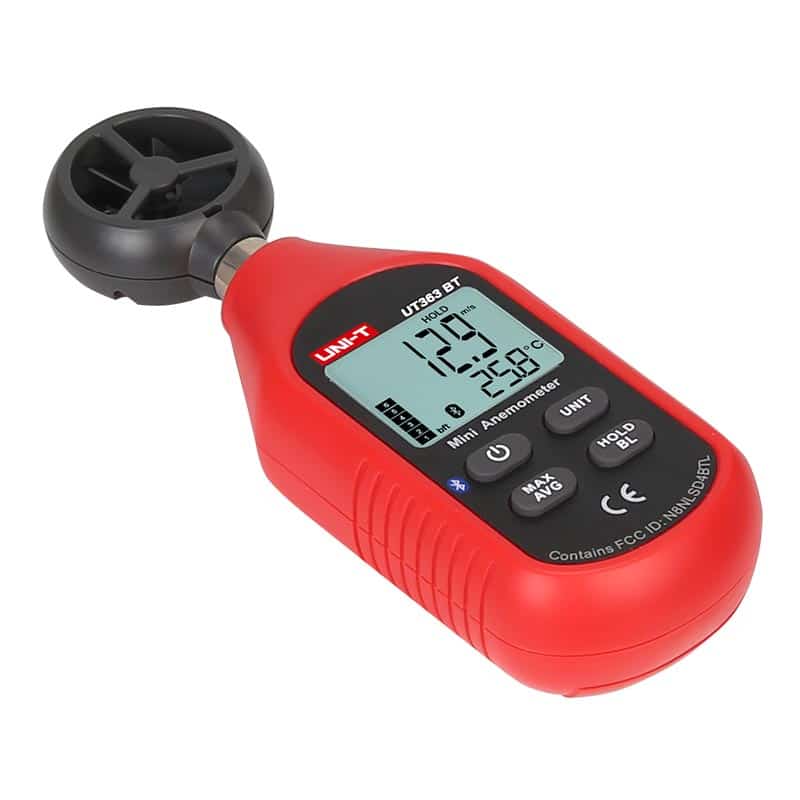Top Features to Search For in an Efficient Anemometer for Accurate Wind Measurement
Top Features to Search For in an Efficient Anemometer for Accurate Wind Measurement
Blog Article
Exploring the Functions and Benefits of Anemometers for Climate Lovers and Experts
From cup anemometers to sonic anemometers, each kind brings its unique set of applications and advantages, shedding light on various aspects of climatic conditions. As we delve right into the features and benefits of anemometers, a deeper understanding arises not only of dominating climate phenomena but additionally of the broader effects for industries like wind power manufacturing and ecological research study.
Importance of Anemometers in Weather Surveillance
Anemometers play an essential role in climate tracking by offering exact measurements of wind speed, assisting in projecting and understanding climate patterns. These tools, ranging from traditional cup anemometers to modern ultrasonic anemometers, are important for meteorologists, researchers, and climate fanatics alike.

Sorts Of Anemometers and Their Applications
The most typical types of anemometers include cup anemometers, vane anemometers, hot-wire anemometers, and ultrasonic anemometers. Cup anemometers are composed of three or 4 mugs mounted on straight arms that rotate with the wind, measuring its speed. Vane anemometers, on the other hand, utilize an openly turning vane to straighten with the wind instructions, offering both wind rate and instructions dimensions.
Each sort of anemometer has its distinct benefits and applications. Mug anemometers are robust and ideal for general weather monitoring, while vane anemometers are preferred for directional dimensions. Hot-wire anemometers are delicate to reduced air rates, making them perfect for interior settings. Ultrasonic anemometers are non-intrusive and provide high precision, typically used in study and specialized weather monitoring applications. Comprehending the qualities and applications of each sort of anemometer is critical for picking one of the most suitable instrument for specific climate keeping an eye on requirements.
Advantages of Utilizing Anemometers in Forecasting
In weather forecasting, the utilization of anemometers uses vital benefits for boosting the precision of weather projecting. Anemometers measure wind rate and instructions, providing crucial information for forecasting weather patterns. By integrating wind data right into forecasting versions, meteorologists can better recognize the movement of climate systems, expect adjustments in climatic conditions, and concern a lot more specific forecasts.
Furthermore, anemometers play an important role in analyzing prospective weather risks. Keeping track of wind speeds helps forecasters anticipate extreme weather condition events such as typhoons, hurricanes, and winter months tornados with better accuracy. This early caution system makes it possible for authorities to issue timely signals and execute essential precaution, reducing the risks to life and building.
Additionally, anemometers help in optimizing renewable resource manufacturing. By examining wind patterns, meteorologists can identify ideal locations for wind farms and anticipate energy outcome, adding to the reliable generation of wind power.

Anemometers in Wind Power Production
Offered the vital duty anemometers play in providing precise wind information for climate projecting and hazard analysis, their importance includes the realm of wind energy manufacturing. Anemometers are vital instruments in the field of wind power, where the dimension of wind speed and direction is critical for determining the usefulness and efficiency of wind generator installations. By accurately measuring wind speeds at differing elevations, anemometers assist optimize the placement and design of wind turbines to make the most of energy output.
In wind ranches, anemometers are purposefully positioned to gather real-time wind data that is made use of to examine the prospective power production of a site. This data contributes in identifying the financial stability of wind energy tasks and you can try these out in projecting energy generation to additional reading ensure grid stability. Additionally, anemometers help in keeping an eye on wind conditions to maximize generator performance, avoid damage from high winds, and ensure the security of workers operating in the location of wind turbines.
Enhancing Weather Recognizing With Anemometers

Anemometers play a key duty in boosting our understanding of microclimates. These localized weather conditions can vary significantly from more comprehensive local projections, making it necessary to have precise data for particular areas. anemometer. By purposefully placing anemometers in different locations, scientists can collect in-depth info on exactly how wind acts in various surfaces, city settings, or bodies of water
Additionally, anemometers add to boosting weather condition projecting models by giving real-time information on wind habits. This information is specifically important for forecasting serious weather condition events, optimizing farming methods, and sustaining sectors like air travel and maritime navigating. Overall, anemometers are indispensable tools that enable us to dive much deeper into the complexities of weather systems, ultimately bring about even more accurate predictions and better-informed choices.
Final Thought
In final thought, anemometers play a crucial role in weather condition surveillance and forecasting by determining wind speed and instructions. Anemometers additionally have applications in wind power production, additional highlighting their relevance in both weather forecasting and eco-friendly power markets.
From cup anemometers imp source to sonic anemometers, each type brings its distinct collection of applications and advantages, shedding light on numerous facets of climatic problems. These tools, ranging from traditional cup anemometers to contemporary ultrasonic anemometers, are essential for meteorologists, researchers, and weather lovers alike. The most common types of anemometers consist of mug anemometers, vane anemometers, hot-wire anemometers, and ultrasonic anemometers. Mug anemometers are durable and appropriate for basic weather condition monitoring, while vane anemometers are preferred for directional measurements. Anemometers are important tools in the area of wind power, where the measurement of wind speed and instructions is essential for figuring out the expediency and effectiveness of wind turbine installments.
Report this page